NorthEast Radio Watch 12/8/2025: Cichon’s Back in Buffalo
In this week’s issue… Veteran newsman returns - Remembering NY's Leitner, RI's Jones - CT AM saved - Maine AM moves - "Indie" adds suburban signals
Text and photos by SCOTT FYBUSH
How do you rebuild two of the most important FM stations in the country, on a 70-year-old tower wedged into a tight piece of land on a crowded college campus, all without missing a beat?
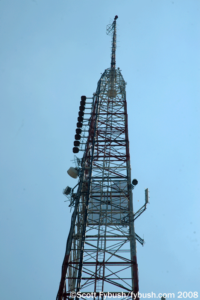
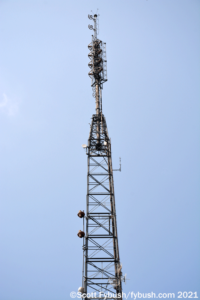
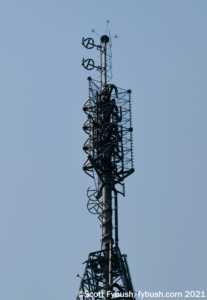
One of our first big trips after the worst of the pandemic took us south to Washington in the summer of 2021 to see the result of this multi-million dollar project that replaced a mish-mosh of aging antennas with a new ERI master antenna serving Washington’s WAMU (88.5), WPFW (89.3) and WTOP (103.5) as well as updated facilities for several other FMs that use the tower on the American University campus.
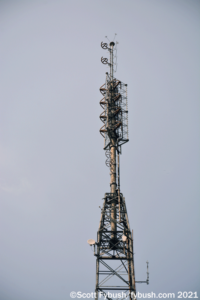
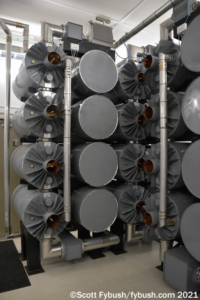
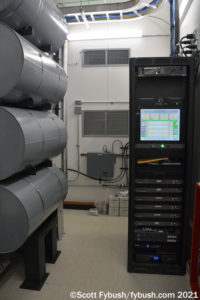
We’d visited here before, back in 2008, when we got what turned out to be a not-great angle of the complex mess atop the tower. A bit of history (of course): this tower was built in 1947 for WMAL-TV (Channel 7), which also installed WMAL-FM (107.3) here. In the early 1960s, American built a new communications building in front of the transmitter building and put its own FM station, WAMU (88.5), on the air from the tower.
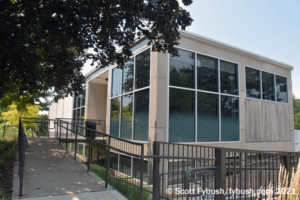
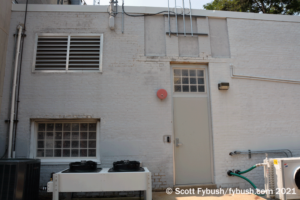
In the early 1970s, things began changing here in earnest: channel 7 (later WJLA) moved away to the taller towers a mile north in Tenleytown, followed by 107.3 (later WRQX) later in the decade. In place of the old channel 7 antenna, a new pole on top of the tower brought classical WGMS-FM (103.5), moving from the Bethesda site of its sister AM station on 570. By the turn of the century, the tower’s top held several antennas: at the very top, an auxiliary site for WPGC (95.5), with interleaved antennas below for 103.5’s directional signal and WAMU’s nondirectional signal. Below that, Radio One’s WMMJ (102.3) had its own “little antenna that could,” a two-bay ERI that helped give the little class A station enough signal to take it to the top of the DC ratings.
Pacifica’s WPFW (89.3) also joined the tower in the late 1970s, using a huge 10-bay side-mounted antenna that heavily loaded the aging structure. Once 103.5 became the main signal for all-news WTOP and WAMU became its biggest competitor on the public radio news side, it was clear better signals were needed for both.
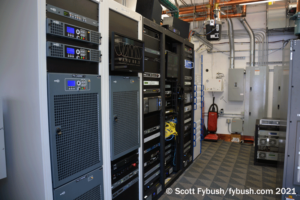
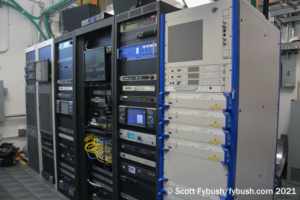
We missed the actual reconstruction, which took place during the heat of the pandemic in 2020, but a year later we got to see how everything here had been rebuilt. WAMU now occupies the very space where WMAL-TV started back in 1947, and it also renovated its transmitter room while the antennas were being redone (it has a full-power aux in Virginia at the WETA 90.9 site, which kept it on the air in the interim.)
There’s redundant everything in this tidy room, including GatesAir and Rohde & Schwarz transmitters for WAMU’s analog and HD operations.
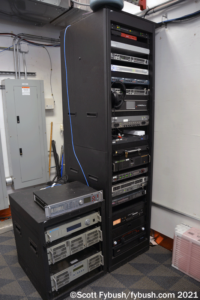
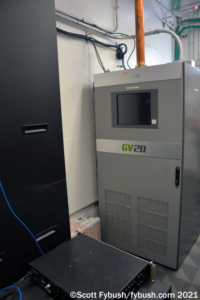
Tucked in across from WAMU’s main transmitter row here, we find the reciprocal aux transmitter for WETA, plus an aux for WPFW.
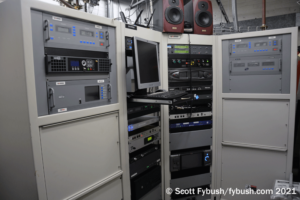
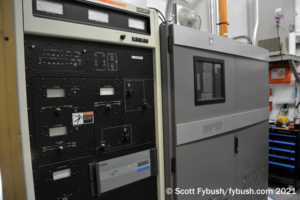
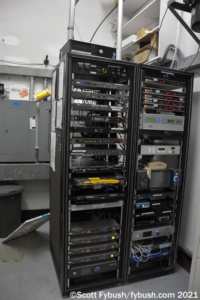
Deeper into the building, there are separate rooms for the other stations using the site. WMMJ tucks its Harris transmitters into a corner of its room, while WTOP has a new Nautel since the last time we visited here, when that older Harris was the main, augmented by a BE for HD Radio.
All of the STLs and processing and monitoring for the highest-revenue commercial FM station in the country? It’s all in just two racks off to the side in this compact room for WTOP, all backed up completely in an auxiliary facility up at the old WTOP (1500, now WFED) site in Wheaton, Maryland, where 103.5 stayed on the air while the tower work was going on over here.
The odd station out, at least as far as space within the main building here, is Pacifica’s WPFW, which lives in an outbuilding that I think was once a generator enclosure.
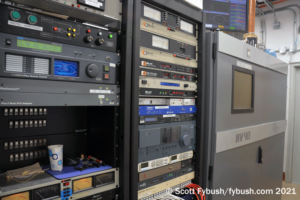
There’s a new Nautel transmitter here, too, bringing WPFW into the HD era (with new subchannels on the way soon.)
The real masterpiece here, though, is hard to photograph because it’s such a tight space. In order to combine WTOP, WPFW, WAMU and WETA’s auxiliary on one antenna, there needed to be room for a combiner. The only space available turned out to be directly under the tower, where a prefab building was rebuilt on a new slab right there within the tower legs, with just millimeters of space to spare.
We’d have needed a much wider lens to fully capture all the combiner modules inside this building, where there’s also a new Burk Arcturus monitoring system keeping tabs on this especially unusual antenna system. Did we mention there’s one directional station on this master antenna? WTOP makes its directional pattern using the left-hand-circular part of the antenna, while the non-directional FMs here use the other input, which can also provide a lower-power non-directional aux for WTOP.
There’s a new two-bay rototiller at the top for WPGC’s aux, and a replacement two-bay rototiller below for WMMJ.
Thanks to WAMU’s Rob Bertrand for the tour!

As we announced a few weeks ago, the 2026 edition of the Tower Site Calendar will be the last.
We began publishing it 25 years ago, and the broadcast landscape is radically different now.
Radio World just ran an excellent article about us if you want to know more.
Once it’s gone, that’s it. We won’t be printing any more.
Thank you to everyone who saw our announcement and rushed to buy it. We appreciate you.
(There are some calendars from previous years if you want more of a tower photo fix — all under $5.)
But don’t wait to get this year’s Tower Site Calendar — buy it now!
We are selling the Broadcast Historian’s Calendar again this year, but we have that in an even smaller quantity — definitely don’t hesitate for that.
And visit the Fybush Media Store to check out our selection of books and videos, too!
And don’t miss a big batch of DC IDs next Wednesday, over at our sister site, TopHour.com!
Next week: New York’s North Country revisited
In this week’s issue… Veteran newsman returns - Remembering NY's Leitner, RI's Jones - CT AM saved - Maine AM moves - "Indie" adds suburban signals
In this week’s issue… Scripps stations face takeover - Sinclair moves more affiliations - CT stations sold - Maine AM surrendered - Remembering WVBR's Shapiro, WABC's Morgan
In this week’s issue… CT TV legend succumbs to cancer - Remembering PA's Adams - FCC still stalled by shutdown - Pittsburgh morning host exits
In this week’s issue… FCC faces reopening challenges - Veteran Boston anchor retires - Morning shift in Toronto - NYC FMs expand reach